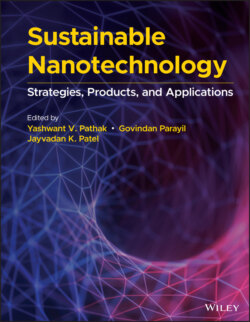Читать книгу Sustainable Nanotechnology - Группа авторов - Страница 40
1.6 Further Training
ОглавлениеAlthough nanotechnology has various applications in the path to global sustainability, it has its risks and limitations that would need to be sorted out before any further development. The enhancement of agricultural methods with the help of nanomaterials has been discussed earlier, but its contribution to the food sector also generates some major risk factors. For one, the toxicology assessments for nanomaterials may not be sufficient enough. The current data from traditional assessments rely on mortality and sublethal endpoints. These tests are also time consuming, costly, and do not relay the data regarding delayed toxicity. The data from one of these assessments may generate a result of low toxicity, but how is that affecting the human body and the environment, in the long run, is not predictable from current methods of testing. Some have suggested using genomic and proteomic techniques for a faster and cost‐effective assessment of long‐term toxicity. However, these techniques do require the state‐of‐the‐art instrumentation [128]. When it comes to nanomaterials, the simple concentration and exposure time are not the only factors that determine its toxicity [129]. The unique properties of nanoparticles, such as size, morphology, and chemistry, could affect their toxicity. In addition, the functional groups and other contaminants present on the surface of these materials can also induce significantly greater toxicity effects than pure nanomaterials alone. These factors contribute to the necessity of redefining the risk assessments for any further nanotechnological developments [130].
